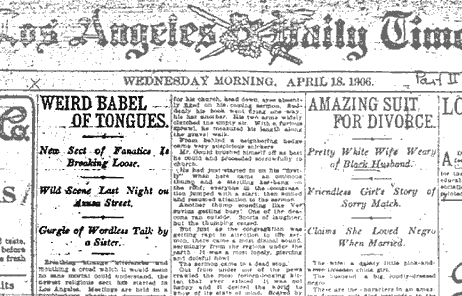 It is a distinct honor when someone as lettered as Leon Wieseltier takes one on in public, as he does in “Dumbing Religion Down in the New York Times,” published October 24 in The New Republic. He does seem to have written this essay in one of his grumpier moods. He accused me of proselytizing for religion (or, to capture the tenor of the critique, of turning The New York Times into a Pentecostal tent revival, as one of my own readers, Jon Bialecki, pointed out). That’s not my understanding of the intent of my columns or of my work. I see myself as pointing out that an activity which makes many readers of The New York Times spit nails—or at least shake their heads in bafflement—has something to recommend it.
It is a distinct honor when someone as lettered as Leon Wieseltier takes one on in public, as he does in “Dumbing Religion Down in the New York Times,” published October 24 in The New Republic. He does seem to have written this essay in one of his grumpier moods. He accused me of proselytizing for religion (or, to capture the tenor of the critique, of turning The New York Times into a Pentecostal tent revival, as one of my own readers, Jon Bialecki, pointed out). That’s not my understanding of the intent of my columns or of my work. I see myself as pointing out that an activity which makes many readers of The New York Times spit nails—or at least shake their heads in bafflement—has something to recommend it.
Tanya Luhrmann

Tanya Marie Luhrmann is the Watkins University Professor in the Stanford Anthropology Department. Her books include Persuasions of the Witch’s Craft, (Harvard, 1989); The Good Parsi (Harvard 1996); Of Two Minds (Knopf 2000), and When God Talks Back (Knopf 2012). In general, her work focuses on the way that objects without material presence come to seem real to people, and the way that ideas about the mind affect mental experience. She trained at the University of Cambridge (Ph.D. 1986), and taught for many years at the University of California San Diego. Prior to coming to Stanford she was the Max Palevsky Professor and a director of the Clinical Ethnography project in the Department of Comparative Human Development at the University of Chicago. She tweets at @tanyaluhrmann.
Posts by Tanya Luhrmann
April 29, 2013
Response to Jeffrey Guhin
I am always grateful for a serious debate on what’s going on with evangelical Christianity. Let me make clear what I am trying to argue in the Harper’s essay.
February 26, 2013
Do Different Understandings of the Mind Affect the Experience of Prayer?
This proposal tests the hypothesis that different “theories” of mind will shape the way prayer practice is experienced and the kind of spiritual experience with which it is associated. The project director has done many years of ethnographic and experimental research on prayer and spiritual experience within a gently charismatic evangelical congregation in the United States and identified specific patterns of interpretation, proclivity and practice consequence associated with kataphatic, or imagination-rich, prayer.

